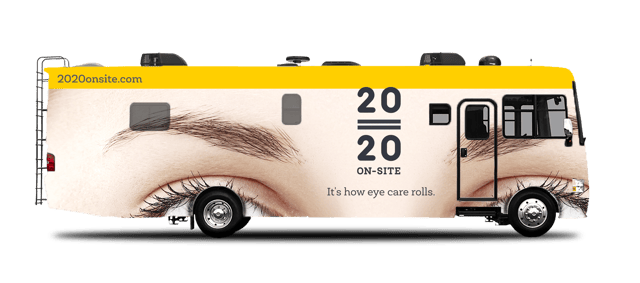Open Enrollment - the Basics
Open Enrollment means employees can sign up for company benefits or modify their current package. Exchange-based healthcare Open Enrollment starts November 1, 2019 and continues through December 15. Most companies also have the same Open Enrollment dates, but not always, so you'll want to confirm your organization's dates and keep employees informed.
If an employee doesn't want to enroll or make changes, he or she can sit it out. But once Open Enrollment ends, anyone who wants to make changes to his or her benefits must wait until the next Open Enrollment period. A person may sign up for or change benefits during a Special Enrollment Period if he or she has one of these qualifying events within the last 60 days:
- Loss of job-based coverage
- Marriage or divorce
- Becoming widowed
- Having a newborn child or adopting a child
- Aging off parents' plan
- Relocation
- Loss of Medicare coverage
- Allowing COBRA plan to expire
Open Enrollment Dates
For most states, Open Enrollment begins November 1, 2019 and runs until December 15, 2019. A few states have extended their deadlines and effective dates. See if your state has an extended deadline here.
Your Open Enrollment Checklist

1. Conduct a Survey
To attract and retain the finest talent, your company needs top benefits that your employees love! Conduct an employee survey to gauge satisfaction, and ask employees about benefits that would enhance their satisfaction in the workplace.
For this survey, you want the highest participation rate possible, so keep it simple! Make it a multiple-choice format so that employees choose from benefits you could offer. Include a free-form answer space for them to provide other benefits they'd like to see. Find out which benefits workers don't often use. Do they even know they have these? It sometimes surprises employees to find out what great perks they didn't know they had. Make sure you communicate your benefits to employees (we'll discuss more about that later).
2. Consider Adding Innovative Benefits.
Telemedicine
Telemedicine saves time and money for both your company and its employees:
- Employees don't have to take off from work
- They save in transportation costs
- It gives access to specialists who are long distance
- There’s no risk of catching a new illness from another patient
Wellness Technology
Wellness Technology helps increase employee participation rate in a company's wellness program:
- Wearable devices like the Fitbit or Apple Watch allow employees to track fitness activities, promote wellness, and increase awareness. You might consider subsidizing devices for employees who take part in a company wellness program.
- Wellness gaming uses technology to create a reward system to motivate employees to reach their health and fitness goals.
Also, wellness technology lets you:
- Encourage employee participation in your wellness program with wellness apps.
- Use social media interaction to encourage friendly competition, group support, and social accountability.

Onsite Healthcare Clinics
Having an onsite clinic or a visit from a mobile clinic offers a convenient way employees can use their medical, dental, and vision coverage. It helps productivity because employees won't have to take time off to see a doctor, dentist, or optometrist. Companies can arrange days for a mobile clinic to come to your site and have employees sign up for health screenings in advance. Most mobile clinic screenings take less than 30 minutes.
Some excellent mobile clinics in the Boston area, for example, include:
- The 2020 On-site mobile vision center, which offers quick and easy eye exams and eyewear to employees, and is proven to boost engagement and productivity.
- Northeastern University's Health in Motion Van, which provides basic health screenings and immunizations.
- The Dana Farber Mammography Van, which provides screening mammograms and breast health education to women 40 years of age and older.

3. Consider Non-Traditional Benefits
The 2018 MetLife U.S. Employee Benefits Trends Study revealed 73% of employees would feel more loyal to a company that provided a benefits bundle that they could customize to their needs. The study also showed that most employees would take a small pay cut to get better benefits choices.
Here are some non-traditional benefits to consider:
Many pet parents think of their furry friends as family. Rob Jackson, co-founder and CEO of Healthy Paws Pet Insurance & Foundation, makes the case that millennials consider pet health and accident insurance a must-have item.
- 55% of pet owners spend $75 a month on their pet
- 76% buy presents a couple of times a month for no reason
- 88% celebrate their pet’s birthday
- 71% buy clothing for their pet

You hired and trained the best talent. Now offer benefits to retain them! An Edassist® survey showed that 85% of employees who received tuition reimbursement felt it played a role in their job satisfaction.
Employee training and development
Increase worker loyalty by investing in their careers. An Employee Training and Development program will help you attract and retain the best employees. What's more, by improving their skills, you give them a chance at getting better pay and moving up in the company.
Offer a 4/10 schedule, where the employee works 4 10-hour days a week. Many workers also like the 9/80 (eighty hours over nine working days) schedule:
- Work 9 hours a day Monday through Thursday
- Work 8 hours on Friday
- The following week, 9 hours a day Monday through Thursday
- Take Friday off
A Brigham Young University study shows that alternative schedules increased employee morale, reduced family/work conflict, and improved productivity.
Let employees choose their own start and stop times for their workday, as long as they work during core hours. A 2016 study from MIT Sloan School of Management and the University of Minnesota showed an increase in job satisfaction and a reduction in stress and burnout in employees with flexible schedules.
The latest advances in technology, such as online meeting rooms and cloud-based applications, make it practical to give employees freedom in choosing their work location. Professor Nicholas Bloom of Stanford University did a study where a travel call center allowed half of its employees to work remotely while the other half continued to work in the office as a control group. He found that the telecommuters increased productivity by 13.5%, plus the company saved $1,900 per month in costs for space and furniture.

4. Communicate What Benefits You Offer
You can inform employees about the benefits your company offers in many ways:
- Have a benefits meeting. A lot of hourly employees appreciate a chance to get away from their routine, while still on the clock. Keep in mind productivity, though! You will have to schedule several of these meetings with a few employees at a time, so that you have staff available to conduct regular business. Alternatively, thanks to today's technology you can record a webinar so that employees can "attend' when it's convenient.
- Send a series of emails or text messages. Give employees bite-sized messages so that they don't suffer from information overload. Send one that covers options for health insurance, then another discussing vision care. In a day or two send a brief about voluntary life insurance, and so on.
- Give them resources. Ask your benefits carrier for pamphlets and brochures to distribute to employees.
5. Make it Easy
If your company doesn't have an employee benefits portal on its website, talk to the web design team about making one! If you have one, make sure it's easy to navigate and simple to understand.
You might have a few employees who either can't or don't want to navigate an online Open Enrollment. For them, have a paper enrollment form so they can:
- Add or remove dependents
- Add or remove voluntary benefits
- Choose options.
Make sure everything is complete before sending it to the printer - you might avoid a headache and wasted money.
Final Tips for a Successful Open Enrollment
The best way to have a successful Open Enrollment is communication. So we'll tie things up with some pointers about informing employees.
- Review last year's Open Enrollment. How did it go? What went well and what needs improvement? You can learn a lot from past mistakes and successes.
- Start communicating early. Get the word out, and always keep the message simple. You want employees to feel empowered and knowledgeable about Open Enrollment.
- Tell them what's new first, because, remember, Open Enrollment is the only time of year they can opt in to new insurance benefits. For example, "New perks in 2020: Get an eye exam in less than 30 minutes. Starting in the new year, we will have the2020 On-site mobile vision clinic at our offices once a month. No need to make a special trip to the eye doctor. We'll send an email to let you know when they're coming and a calendar appointment. It's that easy!"
- Keep it simple. You want the highest participation rate you can get, so send out short, easy-to-understand messages.
Now you have what you need to make Open Enrollment go smoothly this year. Here's to your success!


